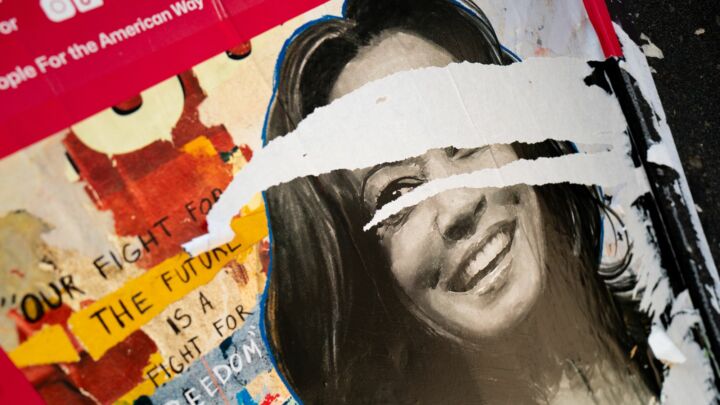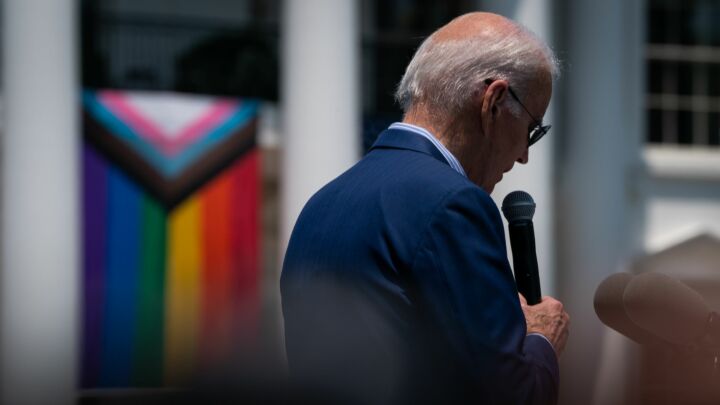Keeping calm and carrying on
A Manhattan resident, reporting from the eye of the storm, is glad to find New York’s leaders acting rationally.

Want to read spiked ad-free? Become a spiked supporter.
Over the past week, Mayor Bloomberg and his team have been pumping out information about Hurricane Sandy. We were told that the subway would be stopped at 7pm on Sunday evening and that the storm would be hitting New York later on Monday. While Bloomberg has consistently adopted a ‘better safe than sorry’ position with regard to almost everything, it is fair to say that New York’s leaders were balanced and calm when it came to hurricane Sandy.
Unfortunately, the contemporary culture of fear meant that people were still feeling very anxious and at risk. On Sunday, for example, many New Yorkers were out purchasing all the water, canned products and torches they could get their hands on. And judging by the number of emails and calls I have received from friends around the world, it was clear that Sandy’s approach was being reported with a great deal of fear-laden hyperbole in the international media.
On Sunday, I took the last train downtown and the subway was eerily empty. To add to the sense of unease, Sandy has even acquired a Halloween-style nickname, ‘Frankenstorm‘, with one report calling it a ‘freakish and unprecedented monster’. Such language was not very helpful. It said more about our current preoccupation with nature having its revenge upon man for interfering with her, than it did about an approaching hurricane or the way it could combine with other climatic elements.
Adding to the sense of trepidation, President Barack Obama declared a state of emergency for New York and other states. And at the back of a lot of people’s minds was the thought that we could have another New Orleans on our hands.
President Obama certainly seemed keen to emphasise the severity of the situation. The imminent presidential election would ‘take care of itself’, he said. The storm was his priority, not the presidency. His rival for the White House, Mitt Romney, likewise sought to downplay the importance of the election compared with Sandy’s arrival.
On the ground, shelters, manned by over 2,200 people, were set up for the homeless and those living in any at-risk, Zone A areas. In addition, the latest information has been readily available throughout, and organised teams on the ground have worked tirelessly to deal with any problems. This demonstrates the difference in the response to a natural event between a wealthy nation with a developed infrastructure and an underdeveloped region, where, sadly, death and destruction is far more likely. New York’s ability to cope with Sandy should be argument enough for more development and better infrastructure everywhere.
Sadly that has not been the case. Instead, many have seen Sandy as some kind of ‘nature’s revenge‘, as if we were being punished by this avenging ‘monster’ for our sins of consumption and greed. In the Nation, Mike Tidwell argued that ‘we’re all from New Orleans now’ on the grounds that if we did not address energy issues, rising sea levels would put an end to us.
There has also been a strain of misanthropy in the response to Sandy. Various commentators have been prepared to entertain the idea that people would be ‘fighting in the streets for gas and food’. However, as Governors Chris Christie and Andrew Cuomo have pointed out, there has been no looting or fighting whatsoever.
Being on Manhattan island while all this was going on, I couldn’t help but feel as though I was part of an Armageddon-style movie. Still, the mood was upbeat and at times even a little dismissive. When the storm really started kicking in from around 6pm on Monday, some wackos did take to Twitter to spread a bit of fear and panic, but the majority of tweets were in good humour.
In fact, social media has been a massive boon over the past 36 hours. Despite the power outages, we were still able to send messages to each other. My neighbour even managed to rescue a friend stuck in an elevator after having been messaged on Facebook.
Overall, I was impressed by the efficiency and durability of much of the city’s emergency systems, not to mention the hard work of those involved – at one point 311 (the US non-emergency number) was handling 10,000 calls every 30 minutes, which is nearly 10 times the normal amount. As exemplified by the retweeting of the most dramatic incidents, such as the Con Edison transformer explosion on 14th Street, much of the news was dominated by isolated flashpoints, not general destruction or bedlam.
However, when the storm came, it came fast and hard. The FDR highway and parts of the west side highway were soon overflowing with water. The Brooklyn Battery Tunnel and some subways quickly flooded, too, with the Metropolitan Transportation Authority calling it the worst disaster in 108 years. Here, a discussion about further investment, innovation and technology is definitely required – and New Yorkers should adopt a can-do approach.
It will take several days to get the subways pumped out and power back up for everyone – New Jersey’s 2.8 million inhabitants are currently without power. Yet at a time when our leaders are too often inclined to hit the panic button when confronted by minor problems, this time they did what they should do, and led in a mostly clear and calm way. Now we need to clear up and move forward.
Alan Miller is director of the New York Salon and Co-Founder of London’s Old Truman Brewery.
Celebrate 25 years of spiked!
A media ecosystem dominated by a handful of billionaire owners, bad actors spreading disinformation online and the rich and powerful trying to stop us publishing stories. But we have you on our side. help to fund our journalism and those who choose All-access digital enjoy exclusive extras:
- Unlimited articles in our app and ad-free reading on all devices
- Exclusive newsletter and far fewer asks for support
- Full access to the Guardian Feast app
If you can, please support us on a monthly basis and make a big impact in support of open, independent journalism. Thank you.






Comments
Want to join the conversation?
Only spiked supporters and patrons, who donate regularly to us, can comment on our articles.